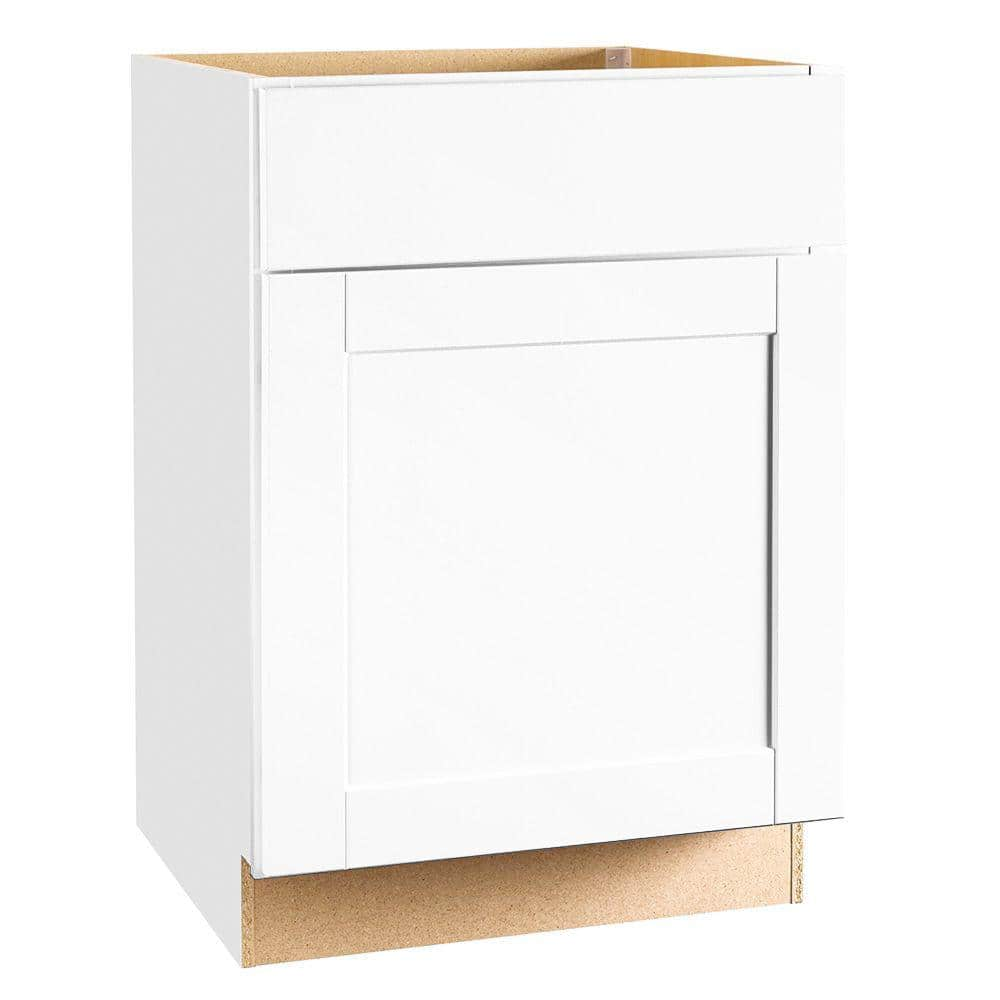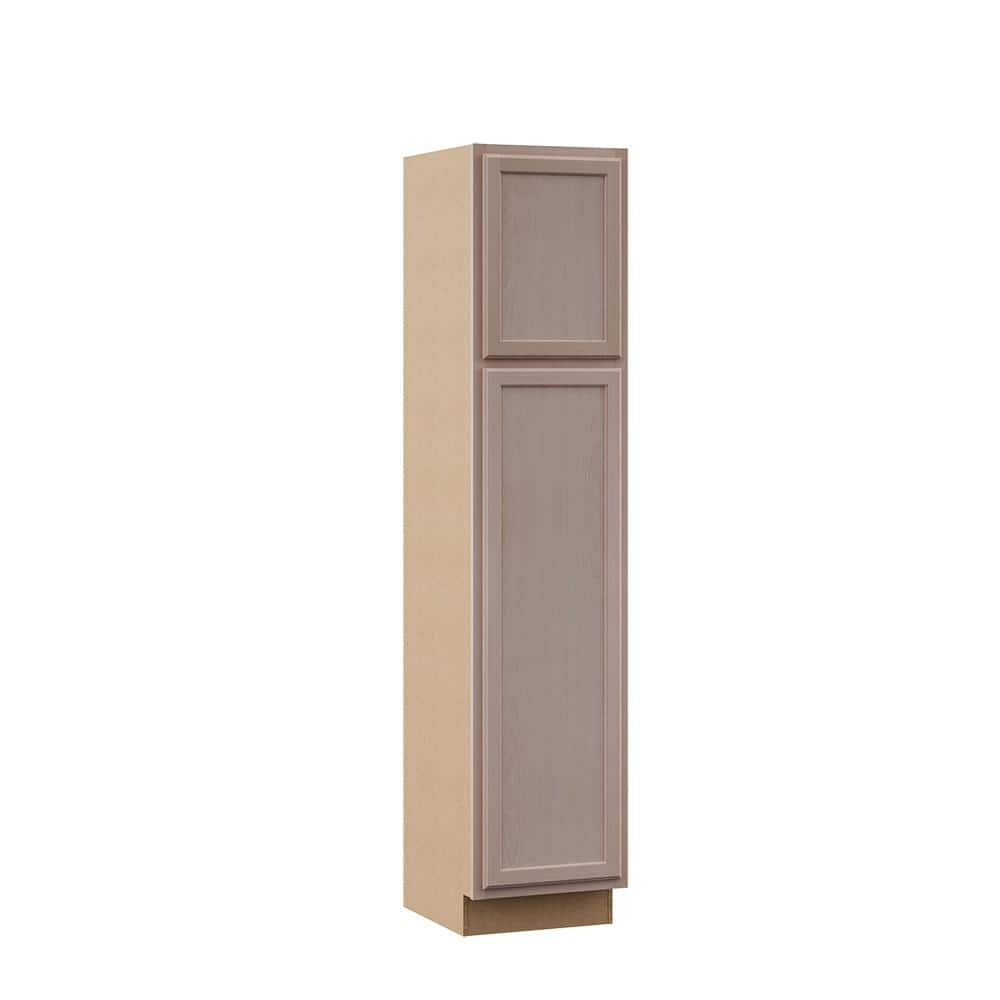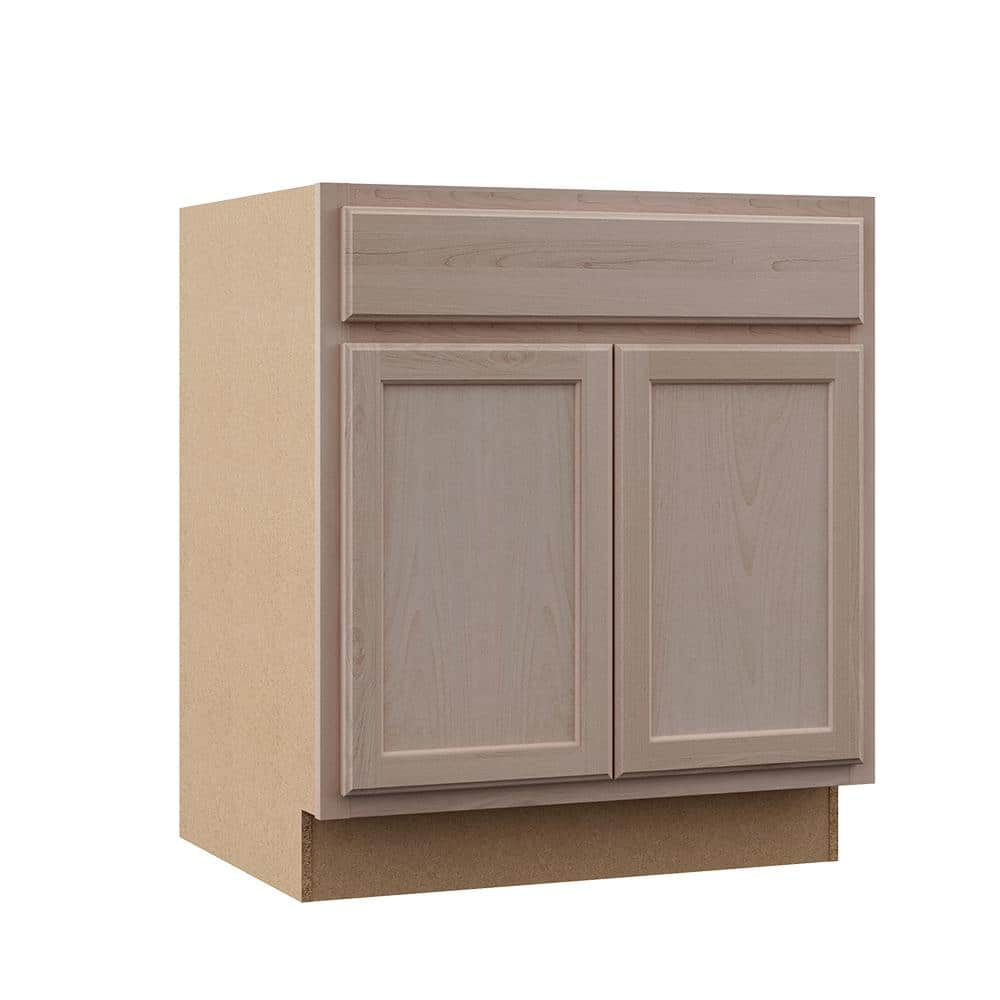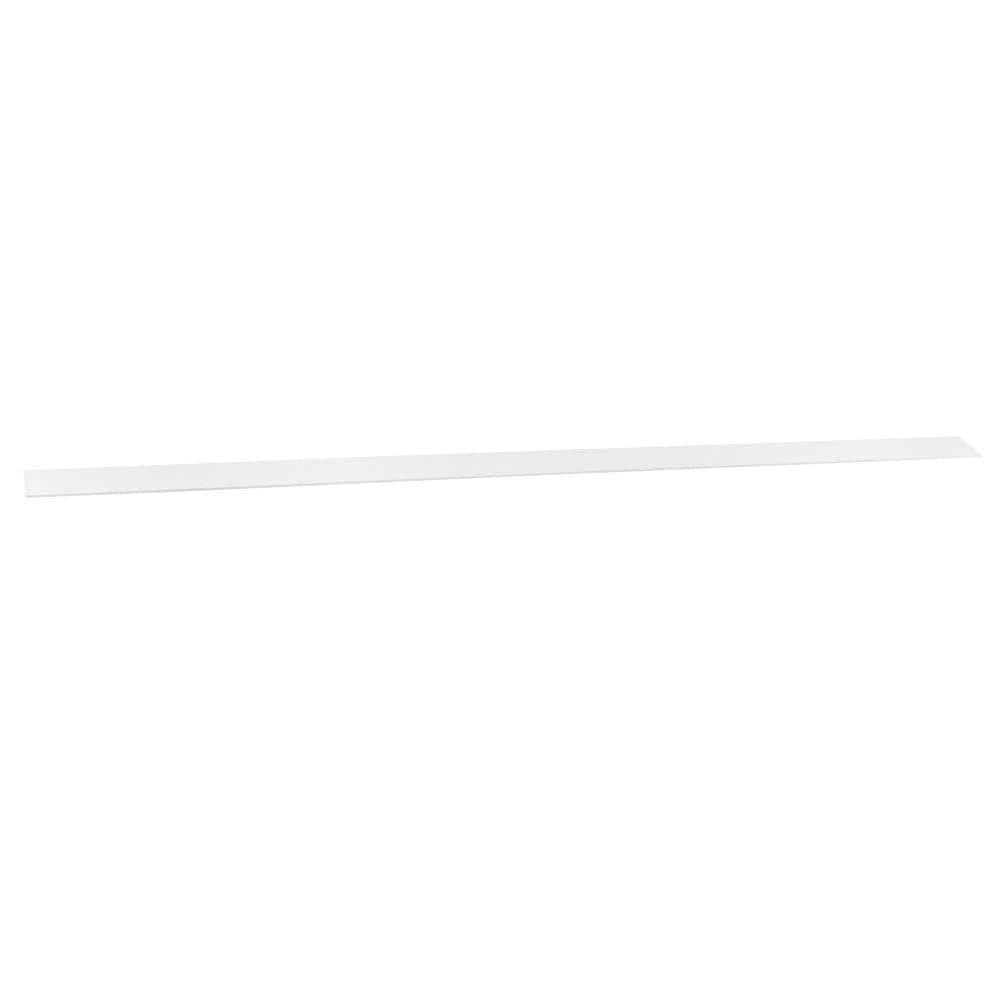Hampton Bay Shaker 24 in. W x 24 in. D x 34.5 in. H Assembled Base Kitchen Cabinet in Satin White with Ball-Bearing Drawer Glides
Get started sooner with online orders shipping in 1 day. Features 1 drawer, 1 reversible door, and 1 adjustable shelf. Shaker White kitchen cabinets add a modern look to any design.
The furniture-quality finish on the Hampton Bay Base Cabinet adds warmth and beauty to your kitchen design. The cabinet’s 3/4 in. shelf thickness offers durability and its adjustable shelf design helps you maximize your storage space. The cabinet has a 4-sided hardwood drawer box that opens easily on smooth glides, giving you easy access to a convenient storage space.
- Composite case construction for durability and strength
- Framed construction with encapsulated panels offers a solid look
- Shaker door style provides a versatile look to your kitchen decor
- Included adjustable shelves are Half-Depth and measure 3/4 in. thick
- 1 adjustable shelf provides easy access for storage
- Ball-bearing drawer glides for smooth operation and durability
- Premium 4-sided hardwood drawer box
- Adjustable hinges are self-closing and hidden from view
- Durable RTF finish
- Limited lifetime warranty
- Encapsulated panels, fully captured in grooves for strength
- Cabinets do not include hardware (decorative, installation, or countertop installation)
- Please follow your countertop manufacturer’s recommended methods for installing countertops
- Cabinet comes hinged left; door can be reversed to hinge right
- Cabinet comes hinged left; door can be reversed to hinge right
- Finished toe kick is not included; can be purchased separately under part number KATK-SW
Additional information
| Dimensions | H 34.5 in, W 24 in, D 24 in |
|---|---|
| Interior Cabinet Depth (in.) | 23.12 |
| Shelf Thickness (in.) | 0.75 |
| Manufacturer Warranty | Limited Lifetime Warranty |






by David
The ad says self-close doors, so we though like we have with a softer close….not so, ithey are just a regular close door and drawer.
by Daniel
Very true to size, drawers open perfectly aligned and are not hard to open. Overall a great buy. (Purchased a 21″ along with a 30″ sink base) both were great.